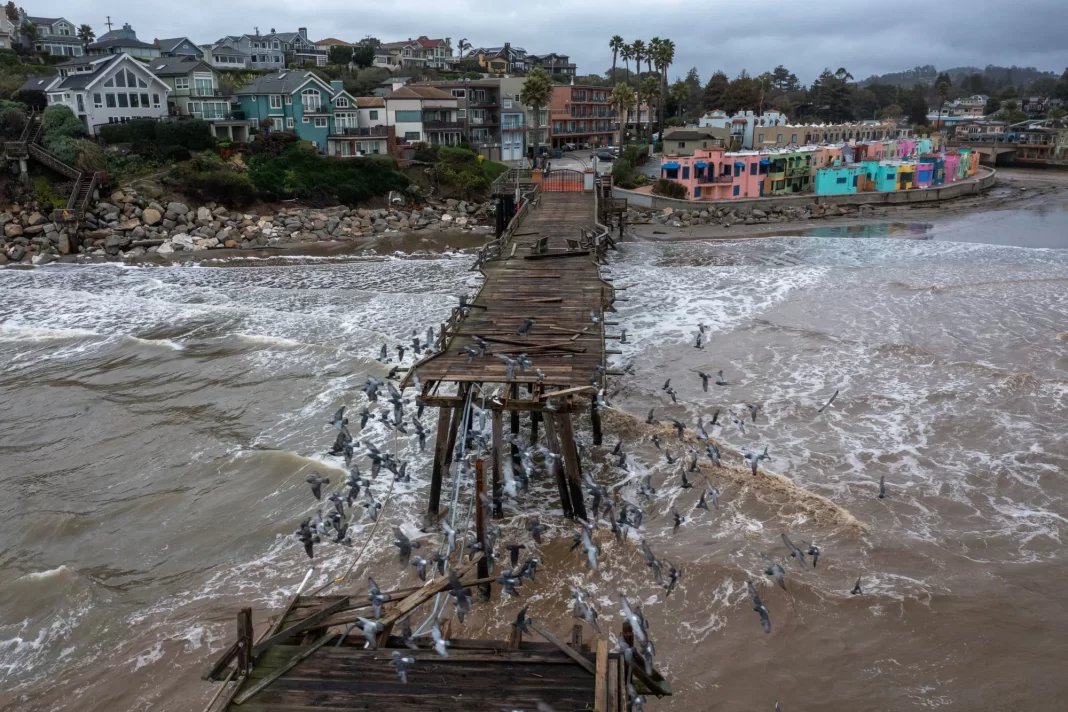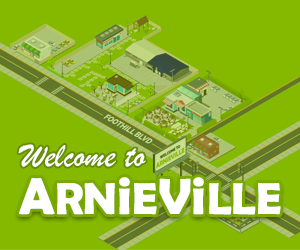The sea has long inspired a human attraction, perhaps even a compulsion, to be as close to the edge as possible. Its sheer power captivates us, even on its most turbulent days, and we can’t help but dream of calling the shore our own. To be out by the surf, to sense the very limits of where land can go, to feel the rise and fall of each wave like our own breath is to reckon with a force so alive it feels otherworldly. But the ocean is not “out there” beyond the shore, it is upon us, carving away at the coast each day despite our best efforts to keep the water at bay. We thought that with enough ingenuity we could contain the sea, but the rising tide is proving otherwise.
Studying this confluence of land, people and sea has kept Gary Griggs busy for much of his life. Seventy-six years old, with a shock of white hair and a long stride, Griggs has spent decades examining every inch of the California coast. An oceanographer, coastal geologist and longtime professor at UC Santa Cruz, he has a way of explaining erosion with the excitement of someone who’s seeing everything for the first time. The coast is always, has always been, changing, he likes to say. Every high and low tide brings new surprises.
On a quiet foggy morning in early March 2020, the tide was going out when Griggs set off for a stroll in Capitola. Reminiscent of an idyllic village on the Mediterranean, with pops of vintage California, this colorful little beach town on the northeast shore of Monterey Bay amuses him every time he swings by. The buildings and shingled cottages are bright pastel, the waterfront dotted with cafes and patio umbrellas. Palm trees and art galleries line the streets downtown, where tourists stop for trinkets and ice cream. On an old wooden wharf that juts 800-some feet into the water, kayakers can step from a tiny dock and paddle out to sea.
Griggs made his way to a set of townhouses that had been planted right on the sand, reportedly one of the first condominium complexes to have been built on the coast. Purple, pink and teal, with whimsical rococo plasterwork, the Venetian Court homes are an indelible snapshot of 1920s California. Steps from the wharf, they serve mostly as private vacation rentals today. A low concrete seawall — so low you could sit on it — is all that holds back the sea.
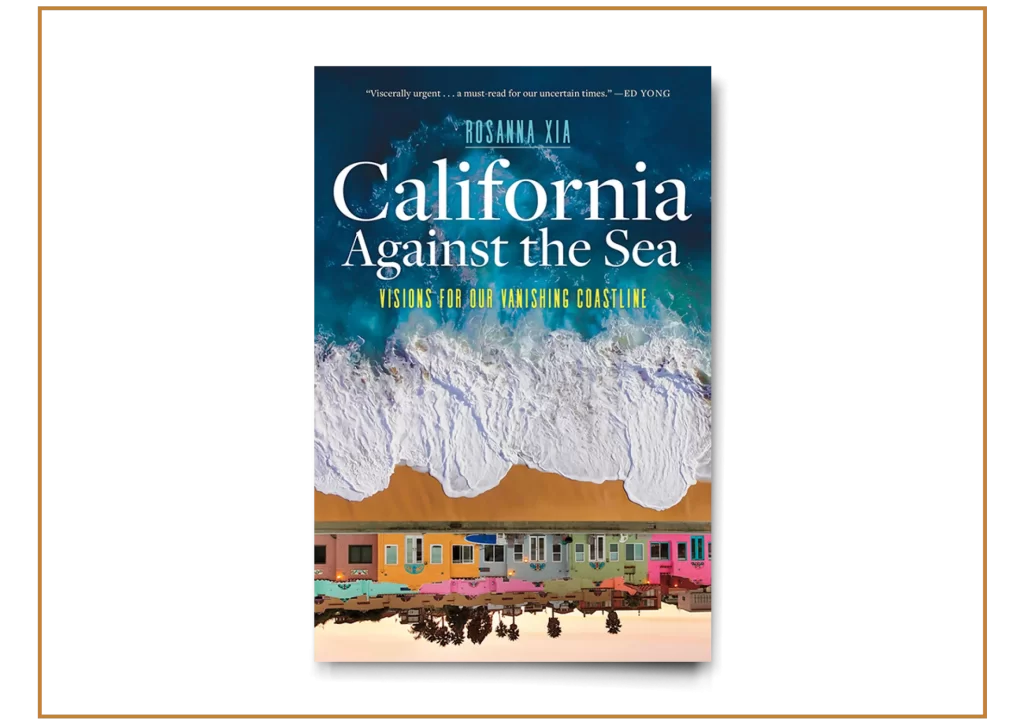
He stooped down, placed his hand on the concrete and noticed it was damp. The ocean often surges over this wall and can flood the entire complex with debris. Poking around, he pointed to piles of sandbags and plywood propped against a number of front doors — humble defenses against the water that had already arrived. Patio chairs, also damp, were stacked into a corner next to a grill covered by a heavy-duty tarp. He pulled out a recent real estate advertisement and read it out loud:
Iconic home on the beach. 1st time on market in almost 50 years. 3 bed, 2, bath, offsite parking. Updated kitchen and baths. Stunning! Price Reduced | $4,800,000
“On the sand, on the sand, on the sand,” Griggs said. “Everybody wants to live on the sand.” He understands this pull to the water, a mark of wealth and well-being that goes hand in hand with today’s notion of the California dream. But by romanticizing the coast in all its vast and freeing splendor, we blind ourselves to the very forces that created this landscape in the first place.
He craned his head to inspect the colorful condo in front of him. Whenever the beach goes underwater and the waves move in, this corner building looks like the prow of a ship lost at sea. Griggs has photos of whitewash splashing halfway up the first row of windows. Next door, the aging wharf also braces against tempestuous surf. Big waves, just a few months prior, had shredded two pilings below the boat hoist. Even the concrete ballast broke. Officials scrambled together $25,000 for emergency repair work to keep the pier open. Rehabilitating the entire structure would cost on the order of $5 million to $7 million, and even that might not be enough to withstand the ocean in the hotter years to come.
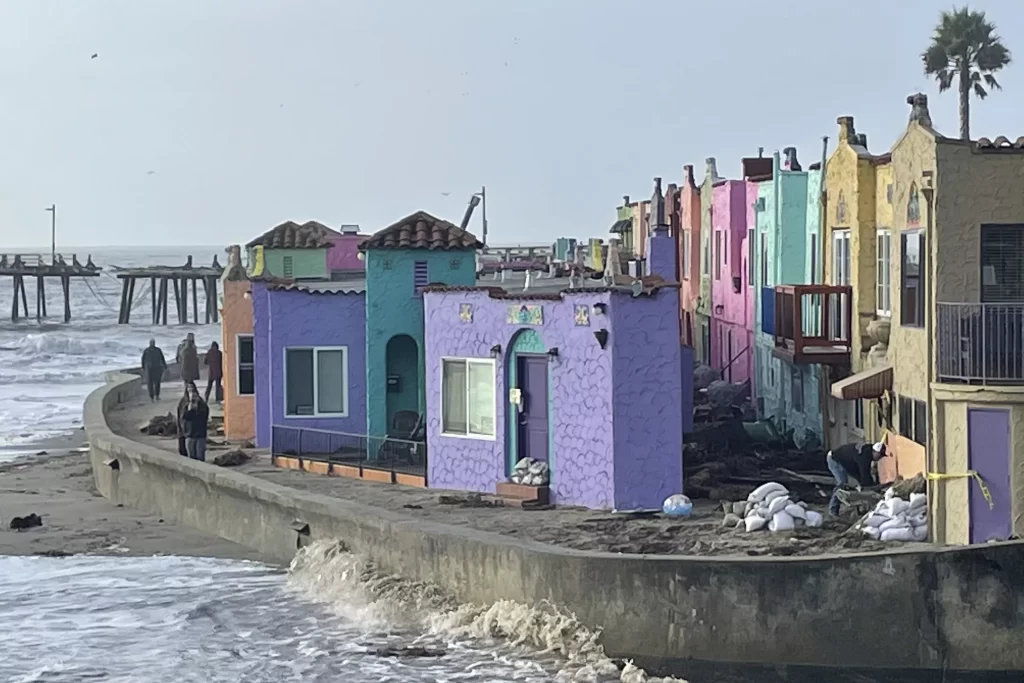
In his more than 50 years of research, Griggs has examined every kind of human defense against the sea and documented both their successes and their many failures. When people seek his guidance on confronting the water, he has no easy answers. There are only so many ways to separate the ocean from what we want to call land, he said. And the true cost of forcing an unmoving line in the sand is proving to be magnitudes more than what California seems willing to pay.
Just south of here, at Seacliff State Beach, an elaborate barricade built in 1926 was destroyed the very next winter and has since been rebuilt — and then damaged or destroyed — eight more times. The version in 1982 cost more than $1.5 million and lasted six weeks (it was designed to last 20 years). These cycles of wishful engineering and natural destruction have only continued to intensify. The observations Griggs jotted down on his walk, in fact, would become even more prescient than imagined. In less than three years’ time, barely a week into January 2023, huge swells, compounded by a series of record-breaking storms, would once again undermine the wall at Seacliff, pummel the Venetian condos and even tear Capitola’s wharf in two.
Griggs took another glance at all the plywood and sandbags in front of him and shook his head. Within just a few decades, Californians have managed to alter the shoreline in such a way that the realities of climate change seem unimaginably daunting. Collapsed buildings, flooded roads, shattered seawalls — all the problems that make the coast so fragile today are not by some fault of nature. A problem exists because our human-built world keeps getting in the way of the rising sea. But this current story of our coast does not have to end in disaster. We can choose to act, to reconsider, to determine a more sensible future. How we proceed can make all the difference, and it’s on all of us to forge a new ending.
There are only so many ways to face the rising sea. Seawalls are one option, but they come with hidden consequences. These hard-fought lines of defense force the sand before them to drown or wash away. For every new seawall protecting a home or a road, a beach for the people is sacrificed. Few issues today along the coast are as divisive and as misunderstood as seawalls, Griggs often explains. “All things being equal, responding to coastal erosion with a hard structure parallel to the shoreline is a decision or choice not to protect the beach at that location.”
Adding sand to disappearing beaches is another tactic. Dredges whir to life and idyllic coastlines from Santa Cruz to San Diego routinely turn into construction zones, with dump trucks and sand dozers pushing sediment for hours across the starving shore. This race against nature, however, lasts only so long as there’s money and enough sand. Elevating homes and roads is perhaps another option, but this, too, costs money — and requires reconfiguring entire communities in dramatic and unfamiliar ways.
Then there’s what scientists and economists and number-crunching consultants call “managed retreat”: move back, relocate, essentially cede the land to nature. These words alone have roiled the few cities and state agencies bold enough to utter them. Mayors have been ousted, planning documents rewritten, campaigns waged over the very thought of turning prime real estate back into dunes and wetlands. Many declared retreat un-American. To win, California must defend.
If the Golden State is going to lead the world toward a better, safer future, our political and business leaders — and the rest of us — will have to work harder to rewrite the California narrative. Here’s how we can push the state forward.
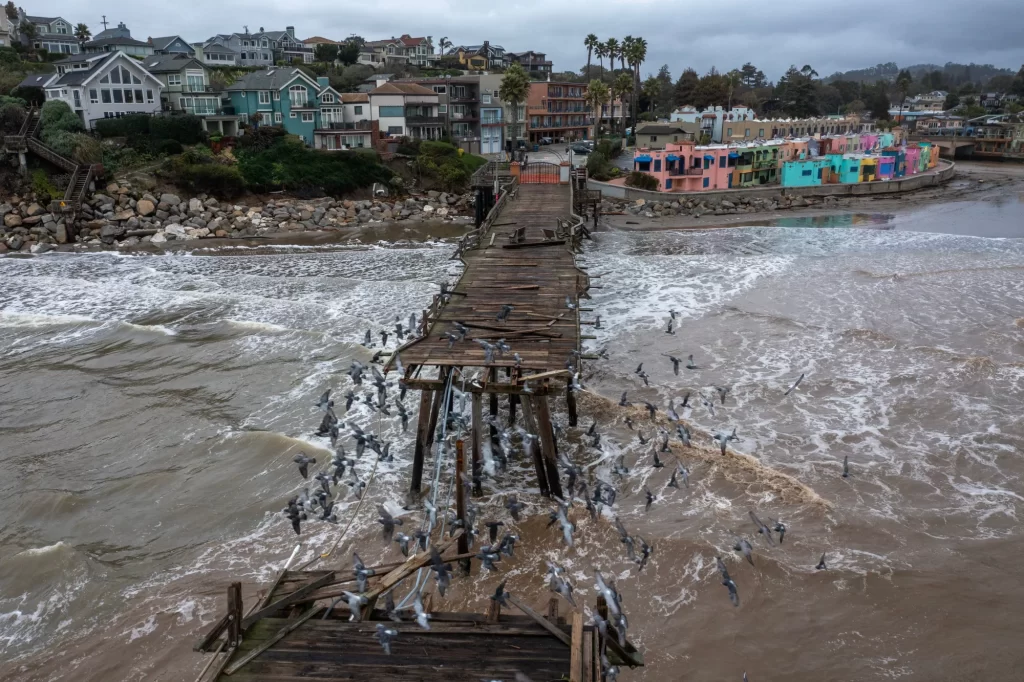
But at what cost? The California coast itself is a series of engineered landscapes — home today to almost 27 million people and all the ports, harbors and major cities that support a state that, if it were its own country, would be the fourth-largest economy in the world. There are limits, however, to this built environment, especially as the realities of sea-level rise force a more collective reckoning. Should California become one long wall of concrete against the ocean? Will there still be sandy beaches or surf breaks to cherish in the future, coastal road trips and oceanfront homes left to dream about? If business continues as usual and global temperatures continue to rise, more than $370 billion in property could be at risk of coastal flooding by the end of the century, the economic damage far more devastating than the state’s worst earthquakes and wildfires. Salt marshes — home to spawning fish, weary shorebirds and many of the world’s most endangered species — face complete extinction. Trapped between rising water on one side, pavement on the other, there’s little room left for these precious ecosystems. In just a few more decades, two-thirds of the beaches in Santa Barbara, Los Angeles, Orange County and San Diego — so deeply tied to the state’s heart and soul — could also be no more.
However you cut it, Griggs said, sacrifices lie ahead. In a world as finite as this one, every decision, big or seemingly small, is a choice to preserve one resource at the cost of another. So, when all that we treasure can no longer be saved, what becomes the priority?
Griggs still has to pinch himself sometimes, stunned by what he gets to do every day for a living. He’s often out examining the juts and crannies of the coast, usually with a binder of notes in hand. It still felt like winter that morning in March 2020 when he zipped up his Timberland vest, rolled up his sleeves, and went for a brisk walk to check out the shore. He had timed low tide just right at Capitola Beach, a flattened, manicured patch of sand along the mouth of Soquel Creek that is bookended by 90-foot cliffs. As the waves receded toward the fog-draped horizon, the water made room for a thin stretch of damp sand below the bluffs.
He walked past a red-lettered sign warning “DANGEROUS CLIFFS. Proceed at your own risk,” and hopped down to the wet, pebbled sand that had just emerged at low tide. He likes coming down here to see what new stories might be revealed in these ancient layers of rock. Inching his way toward the towering bluffs, Griggs explained how this area is a geologic microcosm of everything that could be possible on the coast. He paused at a large mound of broken sandstone and compacted mud. “This wasn’t here two weeks ago,” he said, craning his neck to see what section of the cliff must have collapsed. He pointed to a cavernous undercut that likely destabilized the bluff and noted the clusters of pampas grass, a fluffy, straw-colored weed that wedges its roots into the rocky cracks and joints. Whenever water makes its way into these cracks — from rain or big waves during high tide — the pressure builds until entire slabs of the cliff come crashing down.
He squatted down to take a closer look, brushing his hand over a slab of dark-gray mudrock embedded with a wallpaper-like print of white shells. These compacted layers of mollusk fossils always amaze his students, another humble reminder that everything California is standing and building on was underwater in a previous chapter of this planet’s history. He took a photo, then nudged aside another pile of sandstone. “Look,” he said, “these are all bone fragments. This one seems to be a piece of vertebra.”
Griggs stood up and took a mental assessment of the jumble of rocks. This is all part of nature’s process, he explained. The next high tide will sweep this huge pile of geological history into the ocean, where it will be ground down and eventually returned to the shore as fresh sand. Cliff erosion, and the occasional collapse, helps replenish beaches, but modern coastal living has disrupted this ancient process. Griggs motioned to the row of homes and apartment buildings at the top of the bluff: Engineers have tried all sorts of ways to hold back these cliffs, he said, but it’s not easy slowing down the forces of coastal erosion. “There used to be two rows of pine trees and a sidewalk with benches. It was called Lovers’ Lane. There were all these pictures of people sitting out there,” he said. “Well, the trees are gone, the path’s gone, the road’s gone.” Several homes have also had to move over the years — from earthquakes, from coastal erosion, sometimes both — but the people still living up there want to hold on to as much time as possible.
Time is funny like that. It can take tens of thousands of years to cycle through a geological epoch, just a couple of hundred for industrialization to make a mess of the planet, and only a decade or two to delude people into making decisions based on flawed time frames — whether it’s a 30-year mortgage or a political term that resets every four years. And in this moment when inconvenient realities like climate change have become so politicized, shortsighted individualism has further clouded our ability to plan ahead. We seem to have both no time and too much time to act, and so we spiral into paralyzing battles over the why, who, when and how.
Scientists by now have a fairly firm grasp of the geologic and climate pressures looming over the shore. What’s less predictable, Griggs said, is how people will choose to respond.
All this engineering, all this sacrifice: How many times will we try to overcome a force as vast as the sea? People spend years fighting to maintain a wishful line in the sand, yet a few extra feet of water here or there is hardly a shrug for the ocean. When you look at the coast with wise enough eyes, you can almost see the high-water lines of floods and disasters past … lines foretelling the history we’re doomed to keep repeating, if we keep closing ourselves off to change.
What: Times reporters Rosanna Xia and Sammy Roth will discuss “Our Climate Change Challenge” during a live streaming conversation. City Editor Maria L. LaGanga moderates.
When: Sept. 19 at 6 p.m. Pacific.

